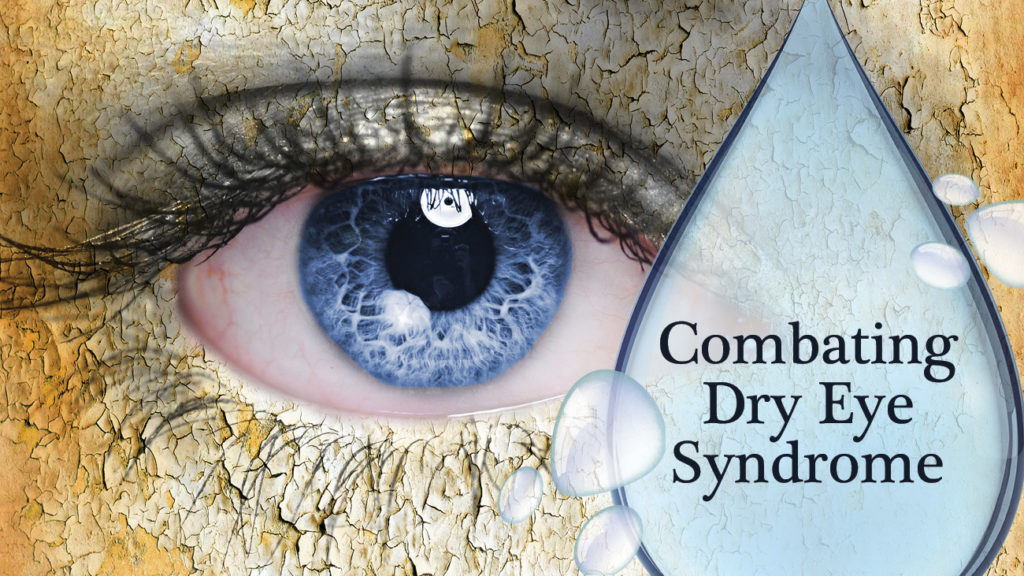Do you experience itchy, burning, or dry eyes? You may be suffering from dry eye syndrome. Tears are necessary for overall eye health and clear vision, when there is insufficient moisture on the surface of the eye it can cause discomfort. Let’s looks at some common causes of dry eye syndrome, symptoms, and risk factors.
What are the causes of dry eye syndrome?
Tears keep the eyes surfaces moist and wash away dust, debris, and other microorganisms. Without constant, adequate moisture, dry eye will occur. Not enough oil in the tears causes them to evaporate too quickly, and without sufficient water production, eyes cannot maintain proper moisture.
Symptoms of Dry Eye Syndrome:
- Scratchy or gritty feeling
- Red eyes
- Blurriness
- Irritation from windy conditions
- Sensitivity to light
- Fatigued eyes
- Problems with contacts
- Excessive tearing
- Heavy eyes
- Sore eyes
Contact lenses and dry eyes
One of the most common complaints from contact lens wearers is their contacts make their eyes feel dry. If you experience dry eye symptoms while wearing your contacts or immediately after removing your contacts, talk with your eye doctor, as it is irregular to feel discomfort.
If discomfort occurs, it is possible you are using the incorrect solution with your contact lenses; not all solutions are made equally. Your eye doctor may also recommend you use eye drops to help temporarily relieve dry eye symptoms.
Another means to relieve symptoms is to change your contact lens type to a more breathable or moisture-focused lens, which is specially made to help retain moisture. You may also want to discuss with your eye doctor the option to switch from reusable contact lenses to single-use lenses. Single-use lenses will help prevent your lens from drying out and work to maintain moisture in your eyes.
Factors that Increase Risk of Dry Eyes
Dry eye symptoms stem from multiple risk factors, including health conditions, environments, and eyewear choice. If you are suffering from dry eye try some of the tips below to help reduce your symptoms.
- Computer use. Humans blink less frequently when working at computers, allowing for more evaporated tears. When working on a computer for an extended period of time, follow the 20-20-20 rule. Every 20 minutes, look 20 feet away for 20 seconds to give your eyes a rest.
- Contact lens. Dry eye discomfort is a primary reason for wearers to stop using contacts. Use rewetting drops daily or talk with your eye doctor about contact lens types that work best for your eyes.
- Indoor environment. Air conditioning, fans, and air heating systems can decrease the humidity indoors and cause symptoms of dry eye. Try using a humidifier in your house if you notice the air getting dryer.
- Outdoor environment. If you are outdoors in dry or windy conditions, wear a pair of sunglasses or hat to reduce your exposure to the elements which can cause dry eyes.
- Smoking. Can cause eyes to dry over time and is the root of various other eye problems.
- Aging. Dry eye syndrome is more common after the age of 50.
- Menopause. Women who have completed menopause are at a greater risk for dry eye than men the same age.
- Health conditions. Certain diseases have a higher risk of contributing to dry eye- such as diabetes or thyroid diseases.
- Medications. Prescription and nonprescription medications can have dry eye as a side effect.


























